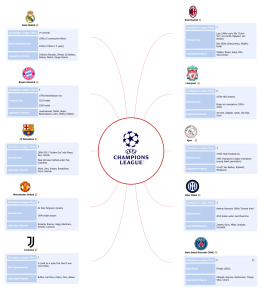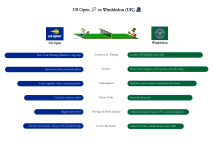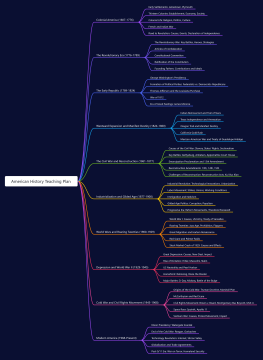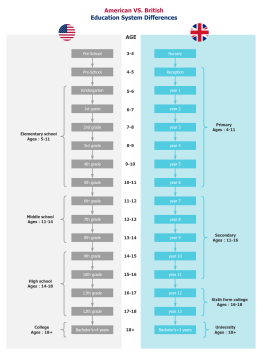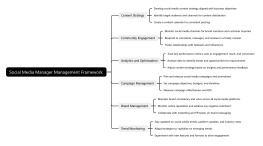
Portrayal of American High Schools: Media vs Reality
1 Report
This mind map explores the 'Portrayal of American High Schools: Media vs Reality,' highlighting the stark contrasts between cinematic depictions and real-life experiences. While movies like 'Mean Girls' and 'High School Musical' often exaggerate social hierarchies, romantic drama, and rebellious teen archetypes, the reality is more nuanced and diverse. Real high schools feature fluid social dynamics, varied extracurricular participation, and a broader range of student experiences. Unlike the high-stakes drama of TV shows, actual high school life involves everyday challenges, subtle identity exploration, and a balance between academics, social life, and personal growth.
Related Recommendations
Other works by the author
Outline/Content
See more
The "Popular Kids" and Social Hierarchies
Media: Movies and TV shows like Mean Girls, Clueless, High School Musical, and The Breakfast Club often feature a clear-cut social hierarchy with "popular kids," "jocks," "nerds," "outcasts," and "bad boys." These characters are typically portrayed in an exaggerated, almost stereotypical manner.
Reality: While social groups do exist in real high schools, the lines are often blurrier. High school students may move between groups, and labels like “nerd” or “popular” can feel outdated in today’s more inclusive and diverse school environments. Real-life social dynamics are much more fluid and complex. Students often identify in multifaceted ways, participating in multiple social circles or even finding solidarity in niche or specific-interest groups (such as gaming, art, music, etc.).
Romanticized High School Life
Media: High school is often depicted as a time for dramatic romantic relationships, elaborate prom nights, and high-stakes social events. Think of iconic moments like the prom king and queen crowning or huge parties thrown by popular students.
Reality: While some students have great experiences with friends and relationships, the high school years can also be full of uncertainty and awkwardness. Not every student attends prom or goes to big parties. Some may not be interested in socializing in that way, and others may feel left out or stressed by social pressures. The pressure to conform to social expectations—like attending every school event or being in a relationship—can be overwhelming for some, and many students prioritize schoolwork, part-time jobs, or family obligations over these social "milestones."
Drama-Filled High School Years
Media: The classic teen drama is a staple in high school portrayals. Shows like Riverdale or Glee lean into wild, over-the-top plotlines—everything from secret love triangles to major life crises happening on a daily basis.
Reality: While high school can definitely be dramatic for some, real life doesn’t always have the same level of constant conflict. Most students face challenges like grades, family issues, or friendship struggles, but the situations tend to be less cinematic and more rooted in everyday concerns. The emotional highs and lows are part of growing up, but they rarely mirror the excessive, cliffhanger drama seen in shows. Most of the time, teens face the usual range of life challenges without the backdrop of major confrontations or extreme moments.
Clubs, Sports, and Extracurriculars
Media: High school movies often highlight sports teams (football, cheerleading, etc.) and clubs like drama, music, or debate as central parts of the student experience. Success in these activities is frequently tied to a character's popularity or personal growth.
Reality: Many students do participate in extracurriculars, but not all high schools have the funding or resources to support large, high-profile sports teams or clubs. Participation in these activities can vary widely, and not every student is invested in them. In fact, some may find their main focus is on academics or part-time jobs. There are also many students who aren’t involved in traditional "popular" activities and may be part of smaller clubs like environmental, coding, or volunteer organizations. Some students simply prefer to keep a low profile, focusing on personal interests like reading, writing, or online activities rather than big school events.
The "High School Movie Moments"
Media: High school is often shown as a series of over-the-top moments—like the big football game, a confrontation in the cafeteria, or the rebellious teen challenging authority in a memorable way.
Reality: High school moments tend to be more grounded. While there are standout events (like homecoming, final exams, or graduation), most of the time it’s a grind of day-to-day routine, studying, managing friendships, and dealing with family dynamics. High school life is often about small victories—getting through a tough exam, a heart-to-heart with a friend, or making progress on a long-term project. The dramatic moments that define many movies simply don’t happen as often in real life.
The Teacher Stereotype
Media: Teachers in the media often fall into categories like the wise mentor (Dead Poets Society), the tough authority figure (The Breakfast Club), or the bumbling, out-of-touch adult (Ferris Bueller's Day Off).
Reality: Teachers in real life are just people doing a difficult job, often with varying degrees of passion and commitment. Some are strict, some are supportive, and many are simply trying to manage large classrooms and different learning styles. The “cool teacher” is more of a rarity. Many teachers go above and beyond, dealing with difficult personal circumstances while still working to support their students. The reality is that teachers are often overworked and underpaid, and they frequently take on emotional labor to help students through challenges that go beyond the curriculum.
The "Rebellious Teen"
Media: Teenagers in movies and shows like The Outsiders or Rebel Without a Cause are often depicted as rebellious, defying authority, and pushing boundaries, leading to some sort of personal revelation or climactic confrontation.
Reality: While there certainly are rebellious students, for the most part, high school students are just trying to figure out their identities and navigate the complex environment of growing up. Many are just quietly doing their work, figuring out how to balance school, friends, and family. The desire to "rebel" might not be as pronounced as depicted in films—students often focus on figuring out who they are through subtle shifts, finding their passions, and establishing personal boundaries in less dramatic ways.
Differences in Media vs. Reality
Exaggeration vs. Subtlety: Media often amplifies the extremes of high school life (romantic drama, epic rivalries, social status struggles) to create more engaging stories. In reality, these events tend to happen, but they’re not as frequent or intense. Students may experience moments of embarrassment, social discomfort, or minor conflicts, but these are often short-lived and not as high-stakes.
Social Dynamics: Media loves the trope of the cliques, but in reality, the student body is much more diverse, and students often interact across various social groups. People who are "outcasts" in one setting may be popular in another, and many students interact with others who share their academic or extracurricular interests rather than sticking strictly to social categories.
Prominence of Sports and Academics: Movies tend to glamorize high school sports or extracurriculars, but in reality, many students are more focused on academics or have different extracurricular interests. The intense focus on school events like sports games and prom is often exaggerated. In reality, students balance a variety of priorities, from schoolwork to part-time jobs, volunteering, and personal hobbies.
The Pressure to Succeed: The way high schoolers handle pressures, from grades to social expectations, is often shown in media as a life-or-death struggle, but in reality, these pressures are just one part of a much broader experience. Most students manage a combination of academic work, social life, family responsibilities, and perhaps work, but this balance isn’t always as dramatic as movies make it seem. Some students thrive under pressure, while others struggle quietly.
Diversity of Experience: Media often portrays a "one-size-fits-all" experience, but in reality, high school life can vary drastically depending on location, resources, socioeconomic status, and other factors. Students in affluent areas may have access to a wide range of extracurricular activities, while those in underfunded districts may face overcrowded classrooms and limited opportunities. The experiences of students with disabilities, students of color, LGBTQ+ students, and those from various cultural backgrounds are rarely depicted in the same way in mainstream media, yet these experiences are equally important in understanding the reality of high school life.

0 Comments
Next Page

